For a long time, when we thought of dinosaurs, we pictured giant, scaly reptiles, like overgrown lizards. But thanks to amazing fossil discoveries, that picture has changed dramatically! We now know that many dinosaurs, including some fierce meat-eaters, were covered in feathers. This incredible discovery has led to fascinating questions about dinosaur feather evolution theories. How did these complex structures develop from simple scales? And what does it tell us about the link between dinosaurs and birds? Let’s explore the scientific ideas behind this feathery transformation!
Don’t Miss This!
After reading, challenge yourself with our interactive quiz at the end. Click here to take the Quiz
Table of Contents
The Old View of Scaly Dinosaurs
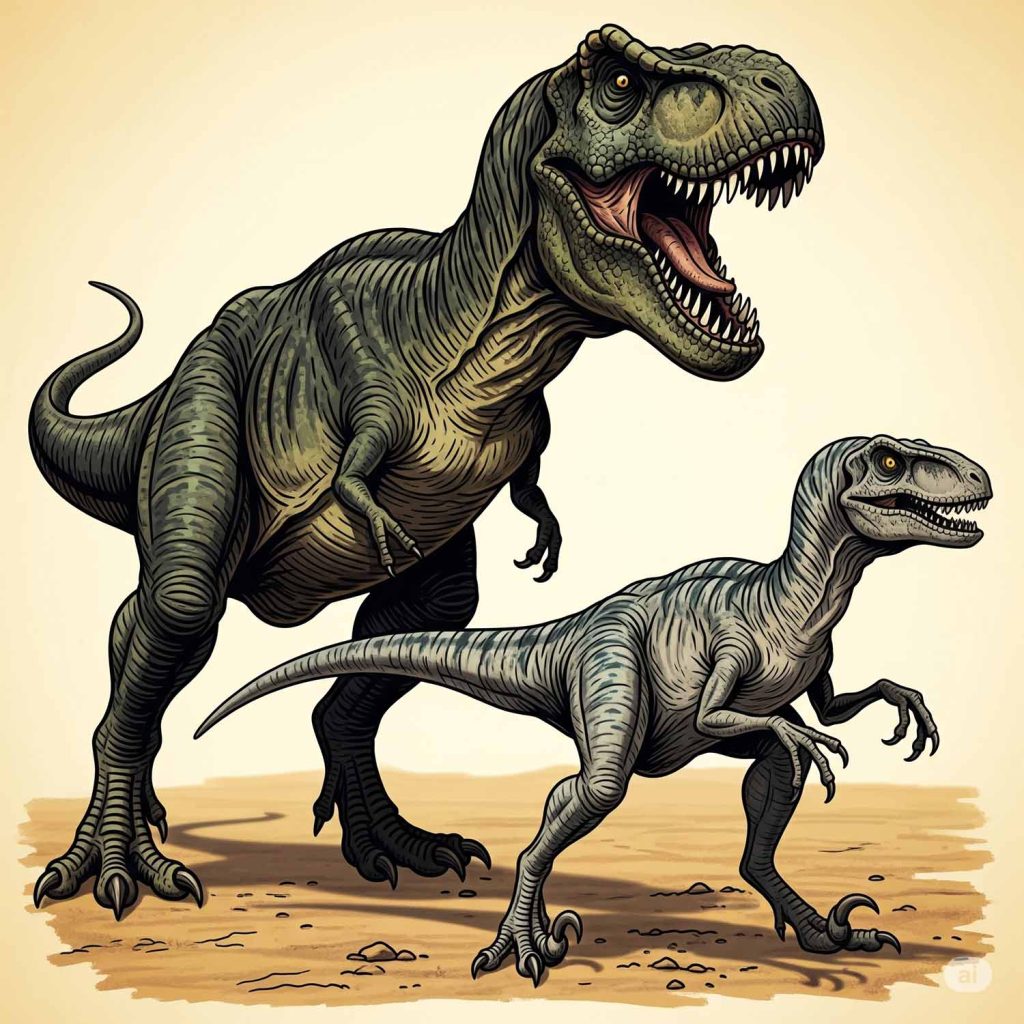
For many years, dinosaurs were depicted as large, scaly reptiles, similar to modern lizards or crocodiles.
For decades, movies and books showed dinosaurs as giant, scaly beasts. This idea came from the fact that dinosaurs are reptiles, and most reptiles today have scales. Early dinosaur fossils often only preserved bones, so scientists assumed their skin was scaly. This traditional view shaped how generations imagined these ancient creatures. But science is always learning and adapting, especially with new discoveries.
The shift in understanding about dinosaur feather evolution theories began with some truly remarkable fossil finds that preserved more than just bones.
The Feathered Fossil Evidence
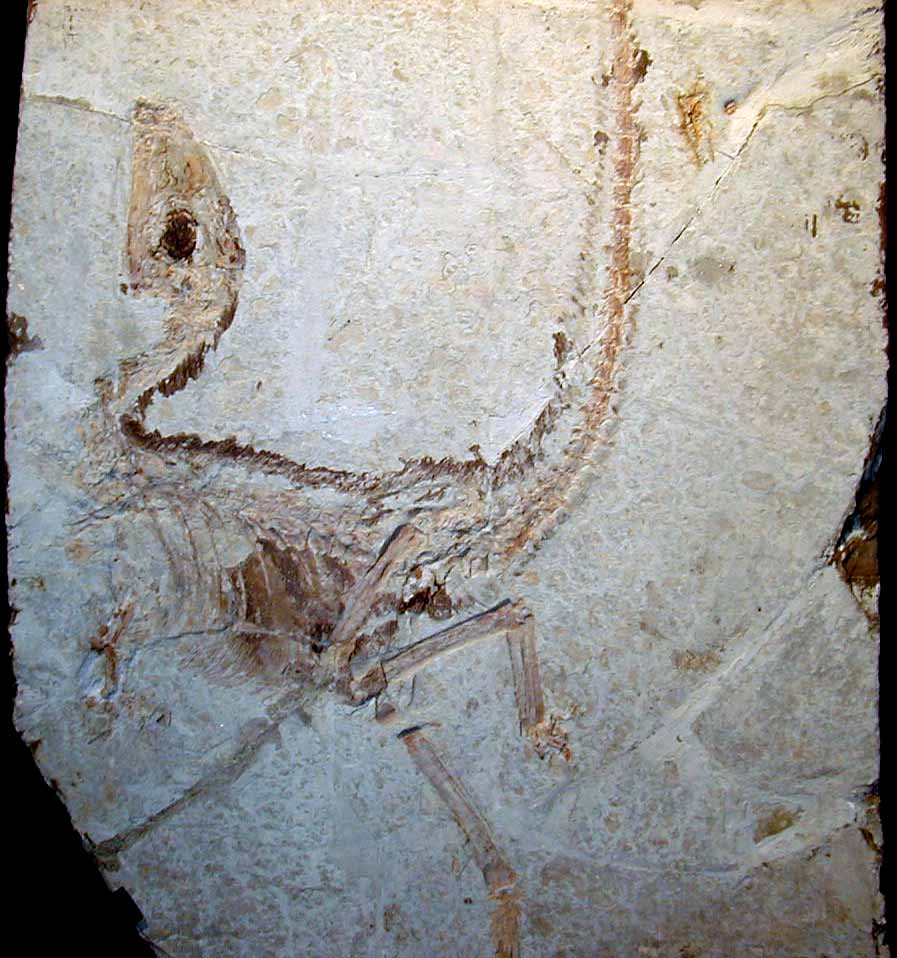
The discovery of Sinosauropteryx in China provided the first clear evidence of feathered dinosaurs.
The biggest breakthrough in dinosaur feather evolution theories came from fossil discoveries in China, starting in the 1996. Paleontologists found incredibly well-preserved fossils from the Liaoning Province. These fossils weren’t just bones; they included impressions of soft tissues, including feathers!
One of the most famous discoveries was Sinosauropteryx. This small, meat-eating dinosaur was clearly covered in a fuzzy, hair-like down. Since then, many more feathered dinosaur fossils have been found, including relatives of Velociraptor and even some larger dinosaurs. This evidence proved that feathers were not just for birds; they were a dinosaur invention!
Theory 1: Feathers for Insulation
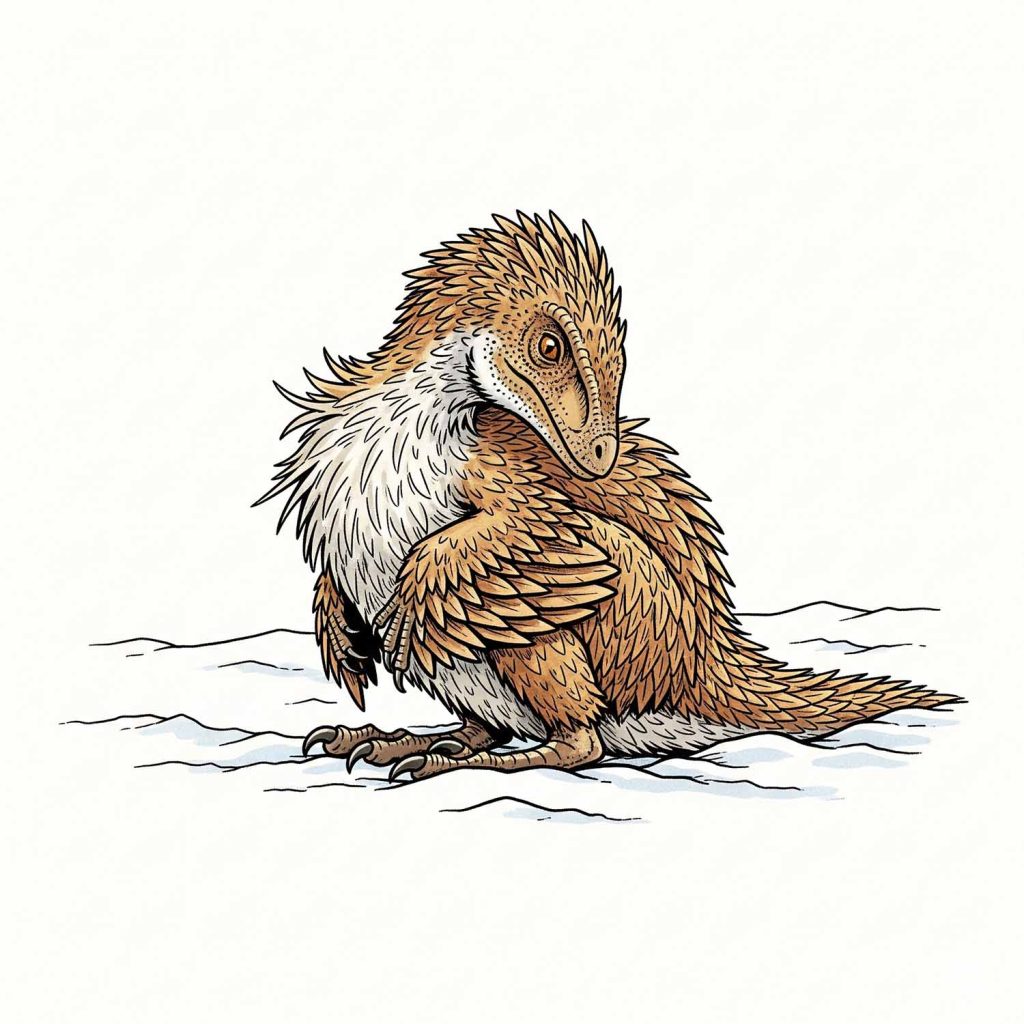
One theory suggests that early feathers helped dinosaurs stay warm, especially smaller ones or those living in cooler climates.
One of the leading dinosaur feather evolution theories suggests that feathers first evolved for insulation. Just like birds today use feathers to keep warm, early dinosaurs might have used them to regulate their body temperature. This idea makes a lot of sense for several reasons:
- Small Dinosaurs: Many of the earliest feathered dinosaurs were small. Small animals lose heat more quickly than large ones, so a feathery coat would have been very helpful.
- Warm-Bloodedness: Some scientists believe that many dinosaurs were warm-blooded, or at least had higher metabolisms than modern reptiles. Feathers would have helped them maintain a stable body temperature.
- Climate: While the Mesozoic Era was generally warm, there could have been cooler periods or regions where insulation was beneficial.
This theory suggests that feathers were initially like a fuzzy coat, not for flying, but for staying cozy.
Theory 2: Feathers for Display and Attraction
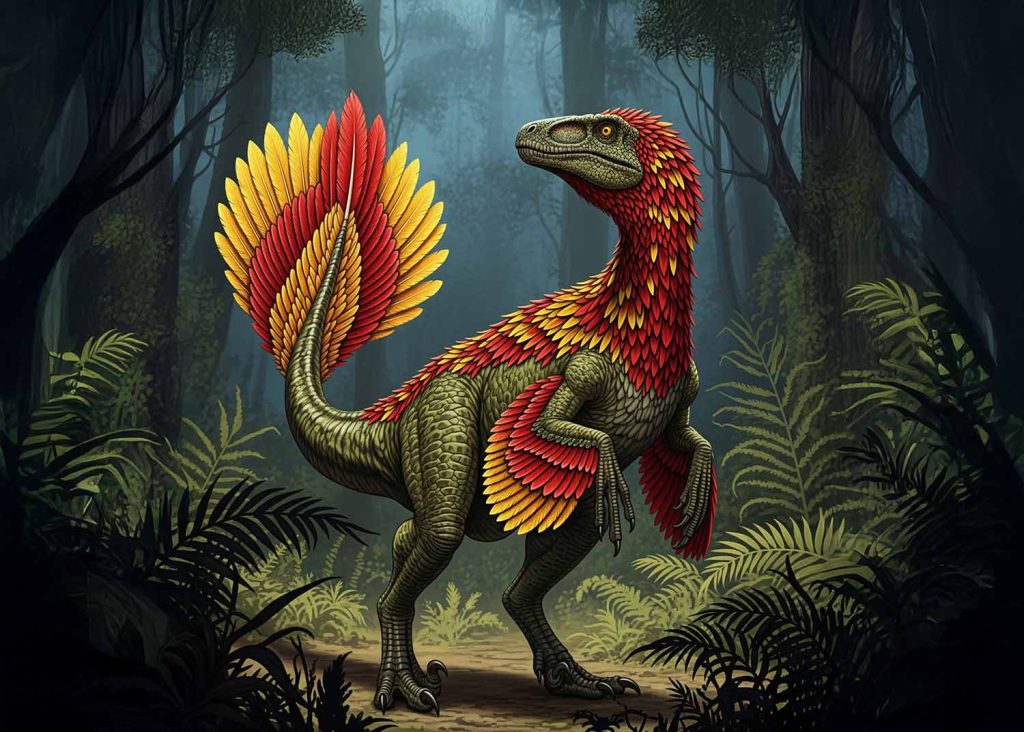
Colorful feathers could have been used by dinosaurs to attract mates or show off to rivals, similar to modern birds.
Another important idea in dinosaur feather evolution theories is that feathers evolved for display and attraction. Just like peacocks use their elaborate tail feathers to attract mates, dinosaurs might have used colorful or patterned feathers to show off. This could have been for:
- Mating Displays: To impress potential partners.
- Species Recognition: To help different species of dinosaurs recognize each other.
- Intimidation: To make themselves look bigger or more threatening to rivals or predators.
- Camouflage: To blend in with their surroundings.
Even simple, filamentous feathers could have been colored. Scientists have even found evidence of color-producing structures (melanosomes) in some fossilized dinosaur feathers, suggesting they were indeed colorful. This theory suggests feathers were a form of ancient fashion statement.
Theory 3: Feathers for Running and Gliding
Some theories suggest feathers helped dinosaurs run faster, climb, or even make short glides before true flight evolved.
A more active idea in dinosaur feather evolution theories is that feathers provided an advantage for locomotion. This could have involved:
- Increased Surface Area for Running: Feathers on the arms or legs could have acted like small wings, providing extra thrust or stability when running very fast, especially uphill.
- Climbing Aid: Feathers might have helped small dinosaurs grip tree trunks or branches, aiding in climbing.
- Gliding: As feathers became larger and more complex, they could have allowed for short glides from trees or elevated positions. This would have been a stepping stone to true powered flight.
This theory suggests that feathers were initially useful for movement on the ground or in trees, and only later became adapted for full flight. It’s a gradual path from simple structures to complex wings.
A Feathered Family
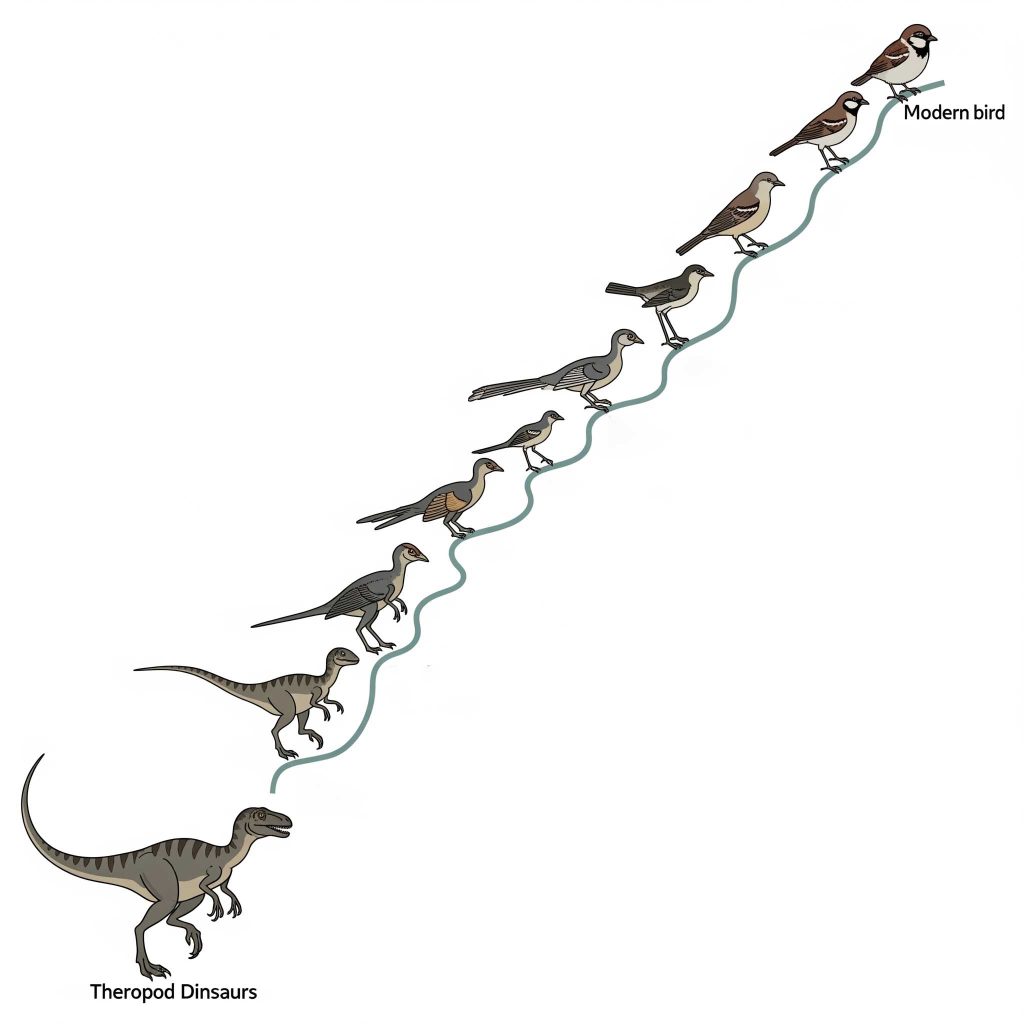
The discovery of feathered dinosaurs provides strong evidence that birds are direct descendants of dinosaurs.
The most profound impact of dinosaur feather evolution theories is on our understanding of the link between dinosaurs and birds. We now know that birds are not just related to dinosaurs; they *are* dinosaurs! Modern birds are the direct descendants of small, feathered meat-eating dinosaurs.
Fossils like Archaeopteryx, which has both dinosaur features (teeth, long bony tail) and bird features (feathers, wings), are perfect examples of this evolutionary link. The evolution of feathers was a key step in this journey, eventually leading to the incredible diversity of birds we see flying around us today.
The Mystery Continues
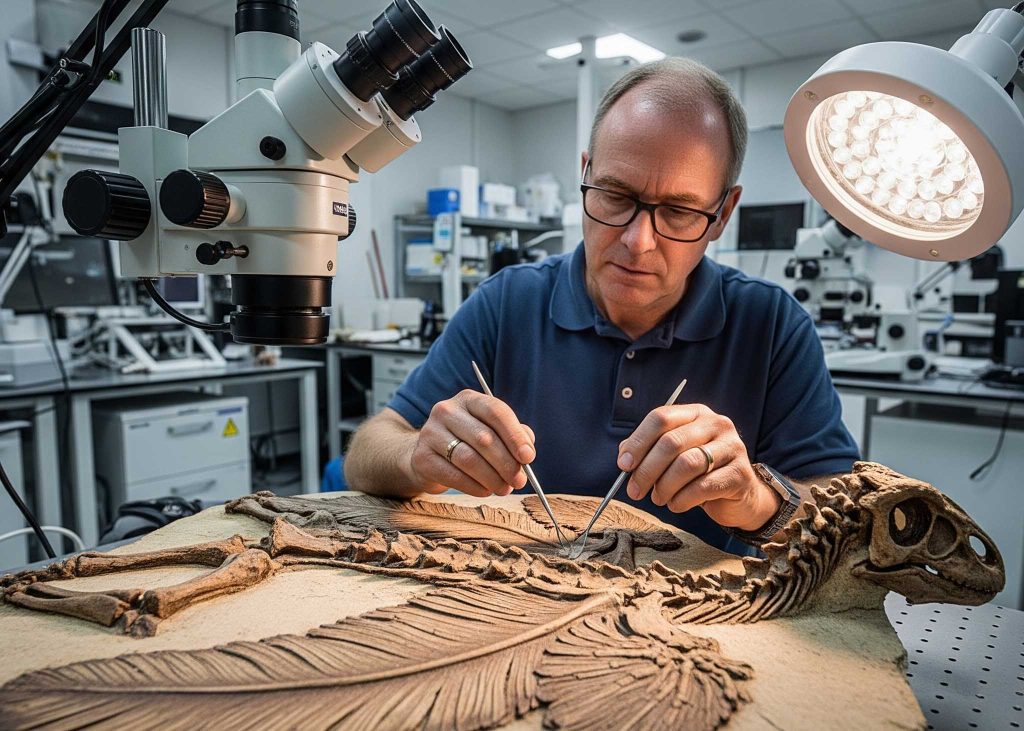
New fossil discoveries continue to reveal more about the fascinating evolution of feathers in dinosaurs.
The study of dinosaur feather evolution theories is an ongoing and exciting field. New fossil discoveries are constantly adding pieces to the puzzle, helping scientists refine their ideas about how and why feathers first appeared. It’s a reminder that our understanding of Earth’s ancient past is always evolving, just like life itself.
The idea of feathered dinosaurs has completely changed how we imagine these magnificent creatures. They were not just scaly monsters, but vibrant, dynamic animals, some of which were covered in beautiful, colorful feathers. It’s a story that connects the ancient world to the birds in our backyards, showing the incredible journey of life on Earth.
Dinosaur Feather Evolution Theories Quiz
Test your knowledge on how dinosaurs developed feathers!

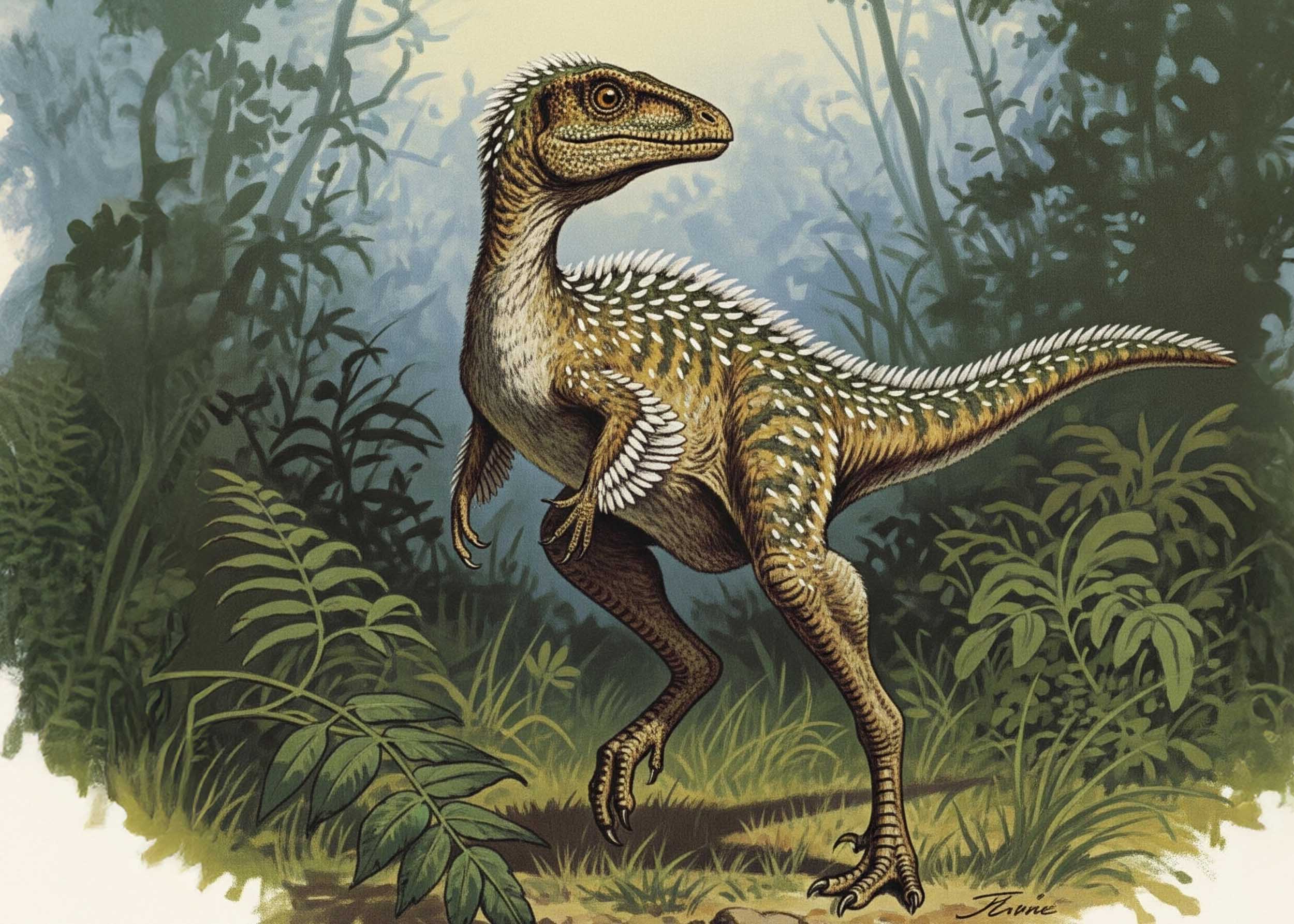
Leave a Reply